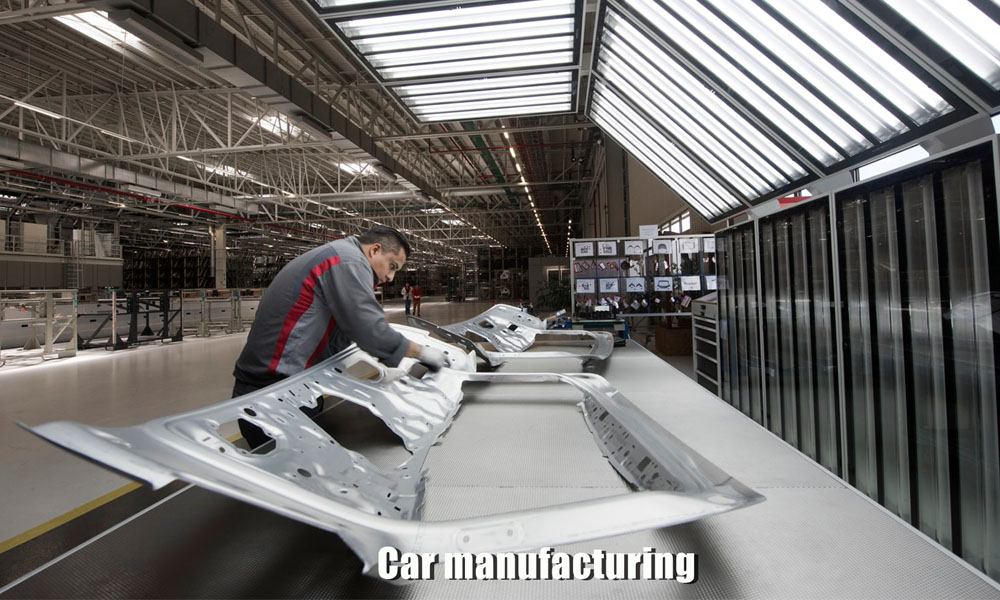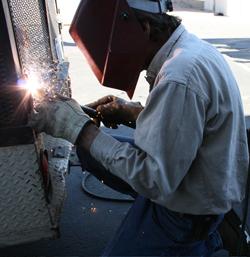Why welds crack and how Montana Mobile Welding and Repair solves them
Common Welding Repair Work Issues and Just How to Address Them Efficiently
Welding repairs frequently encounter a series of problems that can threaten the stability of the last product. Common issues include inadequate infiltration, porosity, and misalignment, to name a few. Each flaw provides unique challenges that require details techniques for resolution. Understanding these concerns is necessary for welders intending to boost their outcomes and skills. This discussion will certainly explore these common welding repair issues and effective techniques to resolve them.
Insufficient Infiltration
Poor infiltration occurs when the weld steel fails to totally fuse with the base material, resulting in weak joints and potential structural failures. This concern typically comes from inadequate warmth input, wrong electrode angle, or inappropriate welding speed. Welders might experience poor penetration due to a miscalculation of the required parameters for a particular product density or type. In addition, contamination on the base material's surface area can impede efficient bonding, intensifying the problem. To attend to insufficient penetration, welders need to guarantee proper setups on their devices and preserve a tidy job surface. Regular examination of welds is suggested to identify any kind of deficiencies early, enabling prompt modifications and the prevention of endangered structural stability in welded assemblies.
Porosity
Porosity is an usual flaw in welded joints that shows up as tiny gas bubbles caught within the weld steel. This defect can jeopardize the stability of the weld, causing decreased toughness and potential failing under stress. Montana Mobile Welding and Repair Belgrade. Porosity commonly occurs from contamination, wetness, or inappropriate welding techniques, which enable gases to get away right into the liquified weld pool. To deal with porosity, welders need to assure proper surface prep work, preserve a clean workplace, and utilize appropriate welding specifications. Additionally, choosing the right filler product and securing gas can reduce gas entrapment. Routine inspection and testing of welds can aid recognize porosity early, guaranteeing timely corrective activities are taken, thereby maintaining the quality and reliability of the welded structure
Misalignment
Misalignment in welding can develop from different factors, including inappropriate arrangement and thermal development. Understanding the origin is crucial for effective resolution. Several adjustment methods are available to realign components and guarantee structural stability.
Sources of Misalignment
Welding misalignment frequently stems from a selection of underlying issues that can endanger architectural integrity. One main reason is inappropriate fit-up of elements prior to welding, which can cause voids and unequal surfaces. Variants in thermal development throughout the welding procedure can likewise lead to distortion, specifically if the products being joined have various coefficients of development. In addition, poor securing and fixturing may fall short to hold parts firmly in location, causing motion during welding. Badly conserved tools, including welding makers and tools, may present variances in the weld grain, further adding to misalignment. Driver mistake, stemming from insufficient training or experience, can additionally play a substantial role in producing misaligned welds.

Improvement Strategies Readily Available
Resolving imbalance properly needs a mix of corrective strategies tailored to the certain issues handy. One common method is using components or jigs to hold elements in the appropriate setting during welding, making sure constant positioning. Furthermore, preheating the products can help in reducing distortion and boost fit-up. For substantial misalignment, mechanical realignment strategies, such as utilizing hydraulic jacks or clamps, can be employed to remedy the placement before welding. Post-weld warm therapy may also be essential to relieve anxieties triggered by misalignment. Careful assessment and change during the setup phase can stop imbalance problems from ending up being significant problems, promoting a smoother welding procedure and improving overall structural honesty.
Distortion
Distortion is a typical challenge in welding that can develop from numerous aspects, including irregular heating & cooling. Comprehending the root causes of distortion is vital for carrying out effective avoidance strategies. Addressing this concern not only improves structural honesty but likewise boosts the overall high quality of the weld.
Root causes of Distortion
When based on the intense warmth of welding, materials often undertake adjustments that can result in distortion. This sensation primarily arises from thermal development and contraction throughout the welding process. As the weld location warms up, the material expands; upon cooling, it acquires, which can develop internal anxieties. Furthermore, unequal heating throughout a work surface can aggravate these tensions, causing bending or flexing. The kind of product also plays a substantial role; steels with varying thermal conductivity and coefficients of growth might react in a different way, resulting in unpredictable distortions. Bad joint style and poor fixturing can contribute to imbalance during welding, raising the probability of distortion. Understanding these causes is crucial for effective welding repair work and avoidance strategies.
Prevention Techniques
Reliable avoidance techniques for distortion throughout welding concentrate on managing warmth input and making certain proper joint layout. Preserving a constant warmth input assists to decrease thermal expansion and tightening, which can cause distortion. Making use of methods such as pre-heating the workpiece can additionally decrease the temperature gradient, promoting uniform home heating. Additionally, choosing suitable joint designs, such as T-joints or lap joints, can enhance security and reduce stress and anxiety concentrations. Carrying out correct fixturing to safeguard the workpieces in place further help in keeping alignment during the welding procedure. Staggered welding sequences can distribute warmth more evenly, stopping local distortion. By using these methods, welders can significantly lower the likelihood of distortion and enhance the total quality of their welds.
Fracturing
Breaking is a common concern encountered in welding repair services, often resulting from numerous variables such as improper cooling rates, material choice, or insufficient joint prep work. The incident of splits can greatly compromise the integrity of the weld, resulting in potential failures during operation. To resolve this issue, welders need to first evaluate the origin, making certain that products work and suitably chosen for the specific application. In addition, regulating the cooling rate during the welding procedure is important; rapid air conditioning can generate stress and result in cracking. Appropriate joint layout and preparation likewise add to lessening the risk. Carrying out these methods can enhance weld top quality and durability, eventually lowering the probability of fracturing in finished weldments.

Insufficient Fusion
A considerable concern in welding fixings is incomplete fusion, which happens when the weld steel does not adequately bond with the base material or previous weld passes - Belgrade Fabrication. This problem can cause imp source weak points in the joint, potentially jeopardizing the honesty of the bonded structure. Factors adding to insufficient fusion consist of not enough warmth input, inappropriate welding method, and contamination of the surfaces being signed up with. To address this issue efficiently, welders must assure correct pre-weld cleaning and surface area prep work, along with adjust their welding specifications to achieve ample penetration and fusion. Regular inspection during the welding process can likewise aid determine incomplete blend early, allowing for prompt corrective steps to improve the overall top quality of the weld
Overheating
While welding fixings can improve structural honesty, overheating offers a substantial difficulty that can result in product deterioration. Extreme warm during welding can change the mechanical residential or commercial properties of metals, causing minimized stamina, raised brittleness, and warping. This sensation is particularly crucial in high-stress applications where structural integrity is extremely important. Identifying overheating can entail aesthetic examinations for staining or distortion, as well as monitoring temperature throughout the welding procedure. To mitigate the dangers associated with overheating, welders need to use proper strategies, such as controlling warm input, adjusting travel rate, and using appropriate filler materials. Additionally, applying pre- and post-weld warm therapies can assist recover product homes and enhance the general quality of the repair work, making certain lasting performance and safety and security.
Often Asked Concerns
What Are the Typical Indications of a Welding Defect?

Exactly How Can I Test My Welds for Top quality?
To check welds for high quality, one can make use of aesthetic evaluations, ultrasonic screening, and radiographic methods. Each technique assures structural integrity, determines defects, and confirms adherence to specified standards, eventually enhancing the integrity of the welded joints.
What Security Safety Measures Should I Take While Welding?
When welding, one should prioritize security by putting on proper individual safety tools, making certain proper air flow, securing flammable materials away, keeping a tidy workspace, and being aware of surroundings to stop injuries and accidents.
Can I Repair a Weld Without Remodeling the Entire Joint?
Fixing a weld without redoing the entire joint is possible, depending on the damages (Fabrication). Strategies such as grinding, adding filler material, or utilizing a welding process can successfully resolve particular imperfections while maintaining the surrounding framework
What Tools Are Important for Effective Welding Repairs?
Crucial devices for efficient welding repairs consist of a welding maker, cord brush, mill, protective equipment, clamps, and filler products. Each tool plays an important duty in making certain top quality and safety throughout the repair work procedure. Porosity commonly develops from contamination, moisture, or inappropriate welding methods, which permit gases to run away into the molten weld swimming pool. Poorly conserved tools, including welding makers and devices, may present disparities in the More about the author weld bead, additional adding to imbalance. When subjected to the extreme heat of welding, products frequently undergo modifications that can lead to distortion. Cracking is an usual problem pop over to this site encountered in welding fixings, typically resulting from different aspects such as improper cooling prices, product option, or insufficient joint prep work. A considerable issue in welding repair work is insufficient fusion, which happens when the weld metal does not appropriately bond with the base material or previous weld passes.